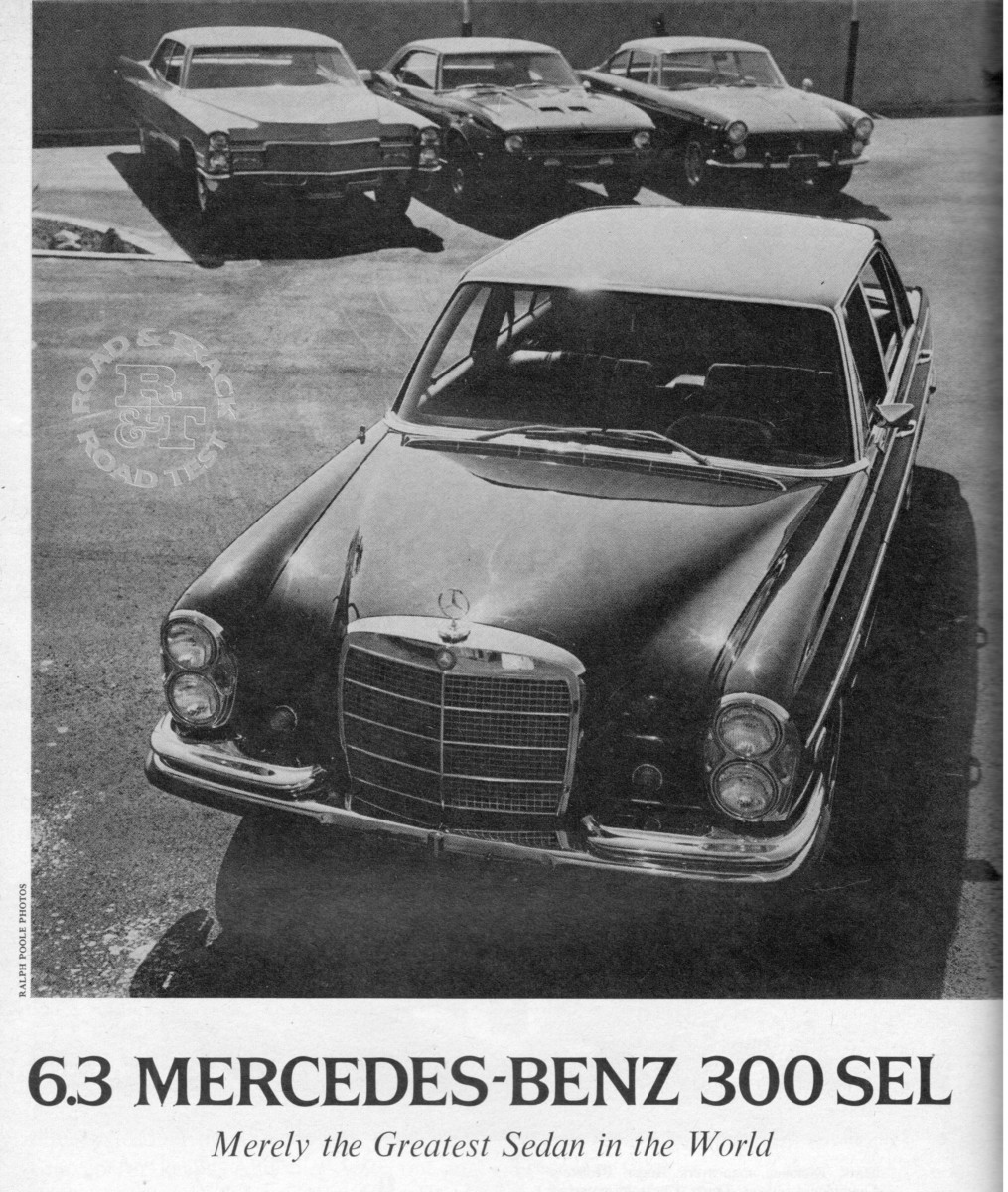For a website dedicated to automotive excellence, it’s almost an oversight to have never truly spotlighted what many consider “merely the greatest sedan in the world”: the Mercedes-Benz 300SEL 6.3. While a proper feature is in the works, consider this piece a worthy prelude to understanding the legend of this remarkable machine. This isn’t just another review; it’s an exploration into what made the 300SEL 6.3 such a revolutionary and coveted vehicle.
The creation of the 300SEL 6.3 was an audacious move, even for a marque as respected as Mercedes-Benz. Imagine taking a robust 6.3-liter V8 engine, originally designed for the prestigious and larger Mercedes-Benz 600, and carefully placing it into the engine bay of the comparatively smaller W109 chassis, typically housing a six-cylinder. It was a surprising deviation from Mercedes-Benz’s traditionally conservative approach. This wasn’t the incremental engine upgrades they were known for; this was a significant leap in power and performance. It was a bold statement, almost as if John DeLorean himself had secretly consulted on this project. The sheer displacement was unheard of for a sedan in its class, especially from a company that meticulously highlighted even minor engine size differences on their models. The 300SEL 6.3 was in a different league, designed not to challenge the flagship Grosser 600 in status but to redefine the very notion of a performance sedan.
The heart of the Mercedes-Benz 300SEL 6.3 was its magnificent 6.3L SOHC V8 engine. This powerhouse delivered a gross output of 300 horsepower, peaking at a remarkably low 4100 rpm. In the German PS rating system, this translated to approximately 250 PS, aligning closely with the net horsepower figures that would become standard in the US shortly after. In 1969, achieving a quarter-mile time of just 15.1 seconds with a sedan equipped with an automatic transmission and “only” 300 horsepower was genuinely groundbreaking. American muscle cars of the era boasting similar horsepower figures, like the Chevrolet Impala or Chevelle, would struggle to match this performance. In fact, a 1966 Popular Science comparison highlighted the Impala 396 (325 hp) with a THM-400 transmission achieving a 17.0-second quarter-mile time and a 0-60 mph time of 8.9 seconds. The Mercedes-Benz 300SEL 6.3 eclipsed these figures with a blistering 6.9-second 0-60 mph sprint, despite both cars weighing around 4000 lbs. This stark performance disparity wasn’t due to any trickery or special preparation; the 300SEL 6.3’s performance was consistently verified across various tests.
Road & Track magazine even put the 300SEL 6.3 to the test against a 427 automatic Corvette at the drag strip, where it impressively won two out of three races. These results solidified the 300SEL 6.3’s position as a true performance contender. While the tested top speed of 131 mph fell slightly short of the factory-claimed 137 mph, the manner in which it reached and maintained such speeds was the defining characteristic. The 300SEL 6.3 delivered exhilarating performance with unparalleled composure and refinement.
It almost feels redundant to reiterate the well-established fact that the Mercedes-Benz suspension system provided a ride quality and handling balance that was simply unmatched in its era. The air suspension of the 300SEL 6.3 offered both a supremely comfortable ride and surprisingly agile handling capabilities. The steering was praised for its precision, responsiveness, and genuine feedback, remarkable even with power assistance. Furthermore, the four-wheel disc brakes delivered exceptional stopping power and control. And let’s not forget the impeccably crafted interior, featuring comfortable seats and a level of appointment that defined luxury in its time.
Road & Track did identify minor shortcomings in their review of the “greatest sedan in the world,” but these were quickly overshadowed by its overall excellence. To experience a stately Mercedes-Benz that could outpace a 427 Corvette in a drag race while also providing the poise to cruise at 130 mph on the highway for extended periods rendered any minor criticisms insignificant. The Mercedes-Benz 300SEL 6.3 was, and remains, an automotive icon, a testament to engineering brilliance and a true embodiment of performance luxury.
